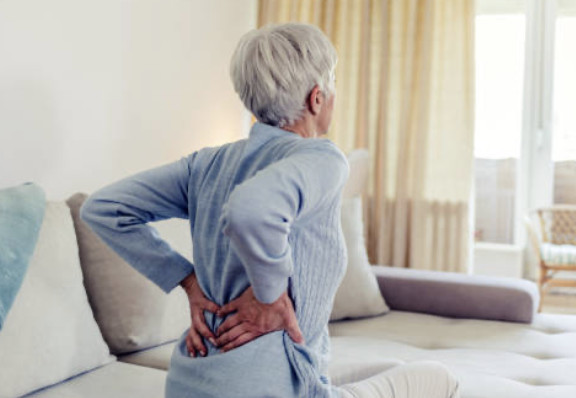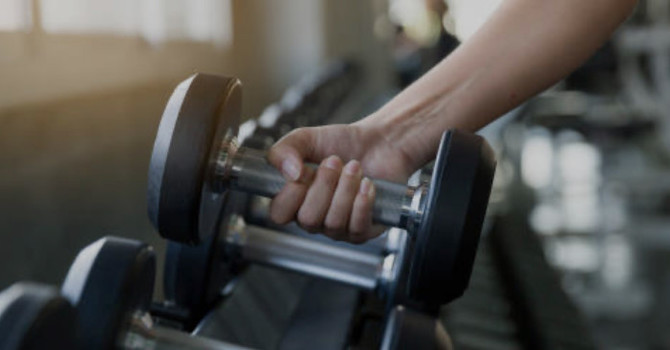
Low Back Pain: What Patients Need to Know - A Physiotherapist’s Evidence-Based Guide
Low back pain affects millions of Canadians every year. Whether it strikes after shovelling snow, lifting something heavy at work, or sitting too long at your desk, it can be frustrating and overwhelming. The good news? Most people recover — and physiotherapy can play a major role in helping you get there.
This article breaks down what causes low back pain, what recent evidence shows, and what you can do to start feeling better. All information is based on current physiotherapy research.
Why Low Back Pain Happens
Your lower back supports your body weight, stabilizes your spine, and helps you bend, twist, lift, walk, and even breathe. Because your lower back works so hard during daily life, it can become easily irritated. Any innervated structure in the lumbar spine can cause symptoms of low back and referred pain into the extremities. This long list of potential structures includes the muscles, ligaments, nerve roots, facet joints, discs, fascia, and vertebrae. Most low back pain is NOT caused by serious damage and it is important to remember this. Physiotherapists call this non-specific low back pain. About 90% of all patients with low back pain will have non-specific low back pain, which is a diagnosis based on exclusion of specific pathology. Specific low back pain includes things like infection, tumour, osteoporosis,a spinal fracture, a structural deformity, an inflammatory disorder, radicular or cauda equina syndrome (see when to seek medical attention).
What Recent Research Tells Us
1. Early Physiotherapy Helps Recovery
Starting physiotherapy within the first week of a lower back pain episode improves return-to-work outcomes and reduces disability (Nielsen et al., 2025).
2. Exercise-Based Physiotherapy Works Best
A 2025 network meta-analysis found active physiotherapy (exercise and movement) is more effective than passive treatments such as massage or ultrasound (Santos et al., 2025).
A 2023 clinical trial showed that multidimensional physiotherapy (exercise + education + cognitive support) resulted in greater long-term improvements (Almeida et al., 2023).
A 2025 systematic review concluded that adding education to physiotherapy does not provide additional benefit unless combined with structured active rehab (Chen et al., 2025).
3. Imaging is not always required
One might think that improvement in imaging resolution would increase the likelihood of detecting a link between pathology and pain in the lower back. However, with imaging, there is often a high rate of false-positive findings. In other words, people that do not have low back pain will have “abnormal” findings, even though they are completely asymptomatic. For example, evidence of herniated discs are shown on computerized tomography (CT) scans and MRI in 20% to 76% of persons with no lower back pain/sciatica. Typically, a trial of conservative management is recommended prior to seeking imaging.
Evidence-Based Physiotherapy Treatments That Work
1. Exercise Therapy
Exercise is thought to produce changes in the musculoskeletal tissues by building tissue capacity and resilience by gradually exposing them to a stimulus, and then increasing that stimulus over time. It is also thought that exercise can work by releasing pain-reducing chemicals, and changing psychological factors (reducing movement-related fear, increasing confidence, etc). Though there are a lot of theories behind why exercise works, we do know that exercise does work. There is no one specific exercise that is “best for low back pain”. There is tons of research that compares core stabilization exercises with general strengthening exercises for the low back. Some of these studies show that low-load stabilization exercises might be a tiny bit better at reducing pain at short-term, but all studies show that general strengthening is equally effective at long-term.
2. Manual Therapy
Joint or soft tissue techniques can help short-term, especially when paired with exercise. A recent systematic review found that manual therapy, when used as an adjunct to exercise, provided increased improvements in short-term pain, function and disability outcomes than exercise alone in the management of low back pain. There is not much evidence to show the long term benefit of manual therapy. A combination with exercise is the best.
3. Pain Education
Understanding pain reduces fear and stress - important contributors to persistent symptoms. Pain education is designed to help those experiencing chronic pain understand what is happening within their own body and aims to reconceptualise pain as a protective output of the brain, rather than a sign of actual tissue damage. The brain starts behaving like an alarm that becomes extremely sensitive and begins to interpret things that are not actually harmful as painful or threatening as a result. Studies propose that pain education in conjunction with either therapeutic exercise or manual therapy may yield significant reduction in pain ratings.
4. Activity Coaching
Physios help modify work tasks, lifting technique, sport participation, and daily habits. Physiotherapy not only strives to improve a patient’s physical function, but also helps them believe they are capable of their own recovery. In the scope of physiotherapy, the term self-efficacy denotes a patient’s belief in their ability to follow through on a treatment plan, including adhering to exercises, managing symptoms and staying active despite pain.
What to expect at a physiotherapy assessment:
- Detailed questioning about your pain and symptoms as well as your past medical history
- Physical examination to assess posture, range of motion, and muscle strength and tests to evaluate nerve function
- Based on your question responses and your physio examination, your physiotherapist will discuss treatment options and give you advice and exercise
- Your physiotherapist will work with you to set goals to work towards getting you back to the things you want to do
What You Can Do at Home
- Keep moving - avoid long bed rest, move frequently between sitting and standing to avoid prolonged posture
- Walk daily - even if you can only tolerate a few mins at a time
- Use heat for stiffness - about 15 mins (hot water bottle, heating pad) - just ensure it is wrapped in a towel to avoid burning your skin
- Try gentle core exercises (bridges, pelvic tilts)
- Pace yourself - balance activity and rest.
Seek immediate medical attention for:
- loss of bladder or bowel control
- numbness in the groin
- sudden leg weakness
- severe trauma
Final Thoughts
Low back pain is common - but very treatable. The latest physiotherapy research supports:
- early intervention
- movement-based treatment
- a combined physical + cognitive approach
- reduced reliance on passive therapies
- optional tech-based support
Recovery is absolutely possible, and you don’t have to navigate it alone.
References
Almeida, I. C., et al. (2023).
Effects of multidimensional physiotherapy on adults with non-specific chronic low back pain: a randomized controlled trial. Advances in Rheumatology, 63(1), 1–10.
Chen, L., et al. (2025).
Does education enhance physiotherapy outcomes for low back pain? A systematic review and meta-analysis. European Journal of Trauma and Emergency Surgery, 51(2), 300–315.
Khurana, M., et al. (2024).
AI-assisted physiotherapy for non-specific low back pain: A systematic review and meta-analysis. Applied Sciences, 15(3), 1532.
Moreno, J. A., et al. (2023).
Rehabilitation following spinal surgery: A systematic review and meta-analysis. Archives of Physiotherapy, 13, 1–15.
Nielsen, M., et al. (2025).
Timing of physical therapy and its impact on duration of disability for low back pain: A retrospective cohort study. BMC Public Health, 25, 22574.
Santos, R., et al. (2025).
Comparing active, passive, and combined physiotherapy interventions for chronic low back pain: A Bayesian network meta-analysis. Journal of Orthopaedics and Traumatology, 26, 885–896.
Delitto, A., George, S. Van Dillen, L., Whitman, J., Sowa, G., Shekelle, P.,. Denninger, T., Godges, J. (2012). Low Back Pain: Clinical Practice Guidelines Linked to the International Classification of Functioning, Disability, and Health from the Orthopaedic Section of the American Physical Therapy Association. Journal of Orthopaedic and Sports Physical Therapy.
Narenthiran P., Granville Smith I., Williams F., (2025) Does the addition of manual therapy to exercise therapy improve pain and disability outcomes in chronic low back pain: A systematic review. J Bodyw Mov Ther. 2025 Jun;42:146-152. doi: 10.1016/j.jbmt.2024.12.004. Epub 2024 Dec 10. PMID: 40325660.
Louw A, Zimney K, Puentedura EJ, Diener I. (2016) The efficacy of pain neuroscience education on musculoskeletal pain: A systematic review of the literature. Physiother Theory Pract. 2016 Jul;32(5):332-55



